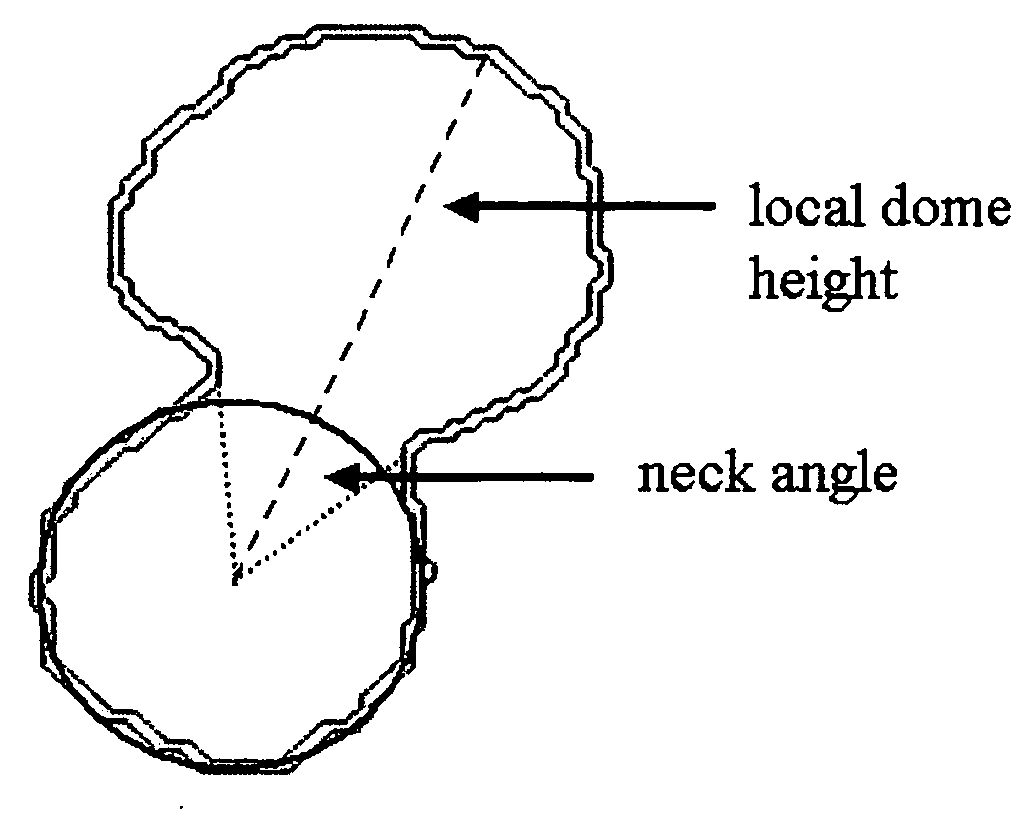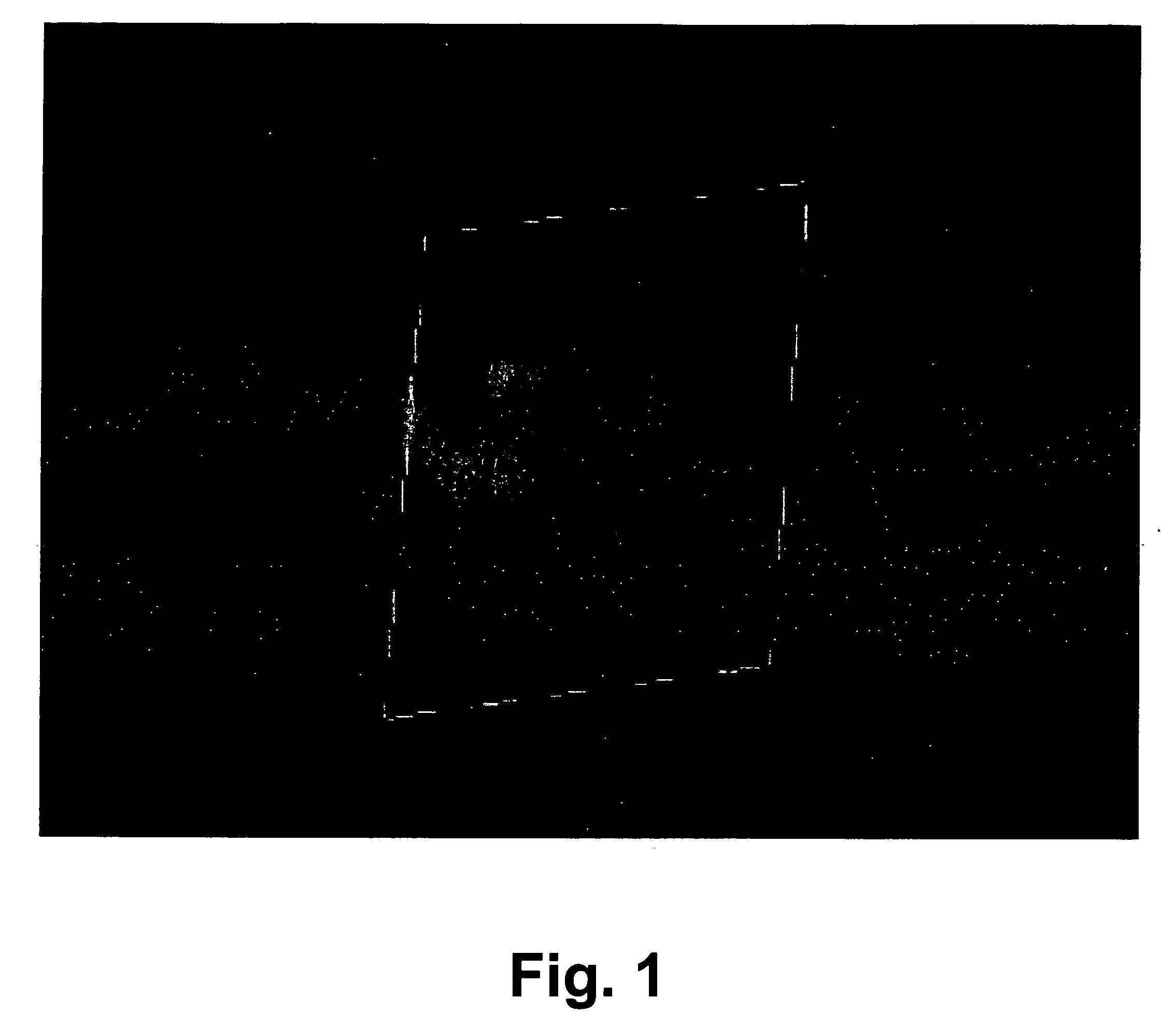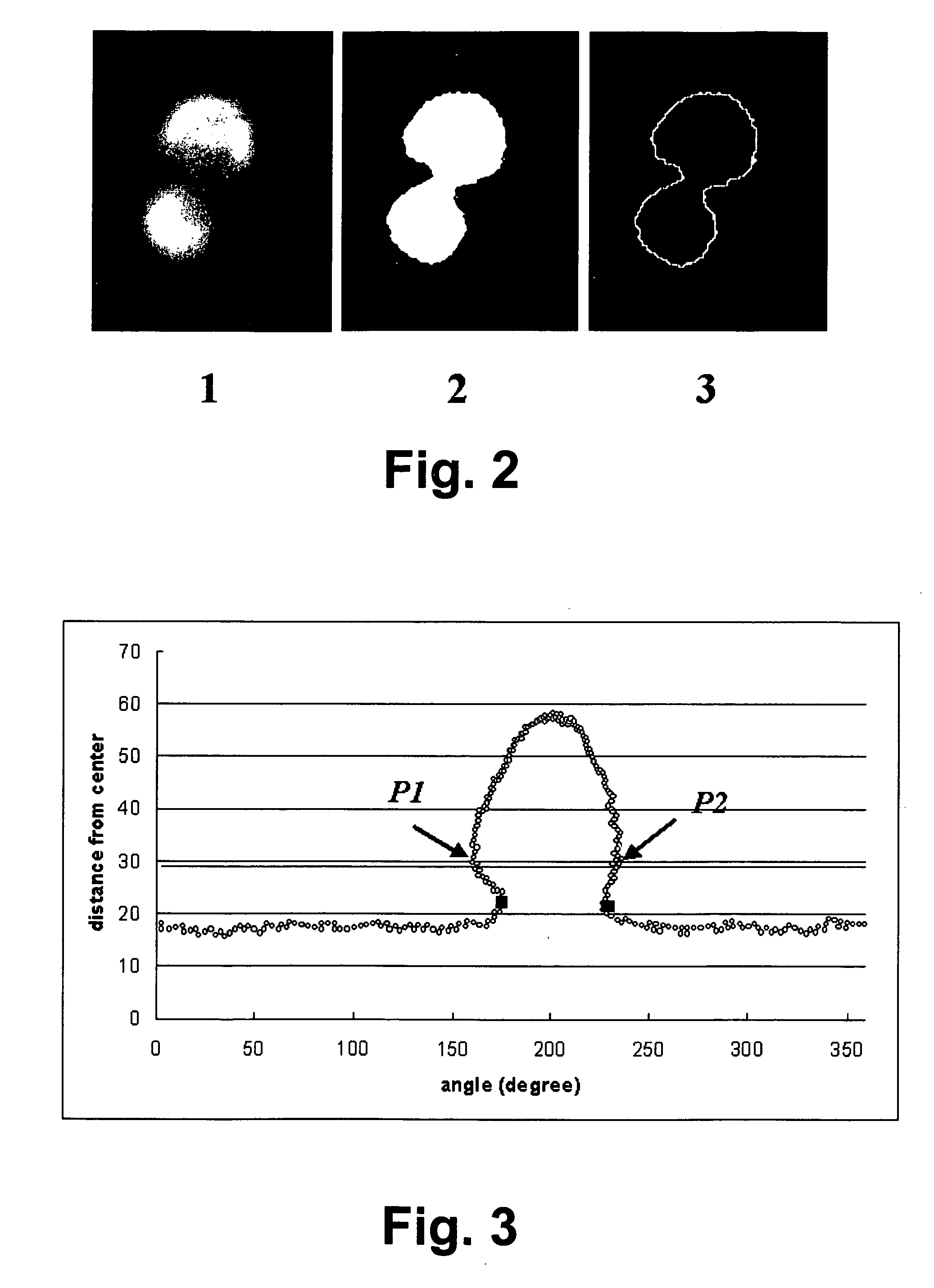Method for aiding stent-assisted coiling of intracranial aneurysms by virtual parent artery reconstruction
a technology of intracranial aneurysms and virtual parent arteries, which is applied in the field of actual and virtual three-dimensional reconstruction, can solve the problems of insufficient working projection, inability to visualize the reconstructed artery segment, and inability to accurately depict the topography of the aneurysm ostium to its parent artery, so as to improve the ability to monitor the deposition of coils and improve the ability to visualiz
- Summary
- Abstract
- Description
- Claims
- Application Information
AI Technical Summary
Benefits of technology
Problems solved by technology
Method used
Image
Examples
case 1
[0117] Wide Neck Paraophthalmic Aneurysm
[0118] Referring now to FIGS. 10a and 10b, the pre-treatment AP and lateral 2D-DSA projection images show the course and size of the parent artery, the aneurysm size, and the neck length.
[0119] Referring now to FIG. 11, the 3D-DSA surface volume reconstruction shows to better advantage the expansion and irregularity of the portion of the ventral wall of the internal carotid artery from which the aneurysm arises. Neither of these show, however, that the aneurysm ostium involves at least 180 degrees of the parent artery circumference. Referring now to FIGS. 12a and 12b, this feature is clearly shown in the cut-plane section and the cut-surface volume reconstruction. Both of these also demonstrate well the “pockets” of the aneurysm that lie outside of the boundaries of the virtual stent. The blue circles mark the location of the virtual stent in each picture. The green arrows depict “pockets” or cul-de-sacs around the virtually reconstructed ar...
case 2
[0121] Wide neck carotid bifurcation aneurysm
[0122] Referring now to FIGS. 14a and 14b, the AP and lateral pre-treatment 2D-DSA projection images show clearly the course of the parent artery, the aneurysm size, and the neck length. Referring now to FIGS. 15a and 15b, the cut-plane section and cut-surface volume reconstruction in a lateral projection and with a circle inserted to show the location and size of the interpolated normal parent artery demonstrate the extension of the aneurysm ostium posterior to the boundary of the parent artery. The circle in a) marks the position of the virtual stent in this cut-plane. The arrows demonstrate the extension of the aneurysm ostium posterior to the boundary of the parent artery. Referring now to FIGS. 16a, 16b, and 16c, the Post-treatment AP and lateral 2D-DSA images show coils that appear to be within the parent artery (see where the arrows point). Comparing these with the cut-plane section and cut-surface volume reconstruction shows that...
PUM
 Login to View More
Login to View More Abstract
Description
Claims
Application Information
 Login to View More
Login to View More - R&D
- Intellectual Property
- Life Sciences
- Materials
- Tech Scout
- Unparalleled Data Quality
- Higher Quality Content
- 60% Fewer Hallucinations
Browse by: Latest US Patents, China's latest patents, Technical Efficacy Thesaurus, Application Domain, Technology Topic, Popular Technical Reports.
© 2025 PatSnap. All rights reserved.Legal|Privacy policy|Modern Slavery Act Transparency Statement|Sitemap|About US| Contact US: help@patsnap.com



